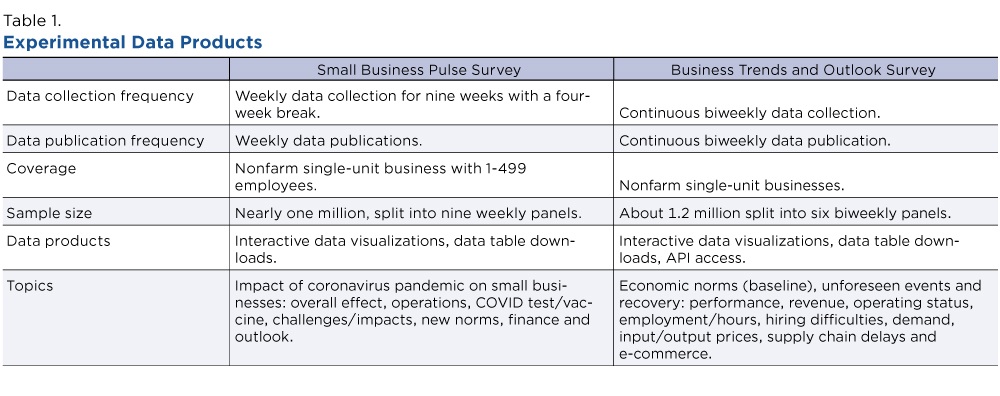Several Census Data Tools and Experimental Products Shifted Focus
The Biden administration announced lifting the national emergency of the COVID-19 pandemic on May 11. This changed the way the U.S. Census Bureau and some other federal government agencies respond to the nation’s data needs.
Census Tools That Shifted Focus
The Census Bureau created the COVID Hub in the spring of 2020 to measure the pandemic’s impact on the U.S. population and businesses.
It stopped updating data on the site in February 2023 and instead is encouraging people to use My Community Explorer (MCE), marking a shift in focus from COVID-19 to data equity.
MCE is designed to help users identify underserved communities as directed by the President's Executive Order 13985 on Advancing Racial Equity and Support for Underserved Communities Through the Federal Government.
MCE allows users to view the resilience of communities faced with disasters and other challenges at the state, county and census tract levels. Using a group of risk factors, areas are scored “High Risk” (3+ risk factors), “Medium Risk” (1 – 2 risk factors) or “Low Risk” (0 risk factors).
The Census Bureau created the COVID Hub in the spring of 2020 to measure the pandemic’s impact on the U.S. population and businesses. It stopped updating data on the site in February 2023 and instead is encouraging people to use My Community Explorer (MCE), marking a shift in focus from COVID-19 to data equity.
The CRE looks at 10 different individual and household level risk factors when creating the measurement of social vulnerability. Some of the risk factors include: households below poverty, no broadband internet access, and without a vehicle.
The map above captures all the wildfires in the United States on a given day (2/10/2023 in this example). Users can filter by other events such as hurricanes, floods and air quality alerts.
The equity supplement of the Community Resilience Estimates (CRE) shows the risk factors of each area affected.
Later this year, the Census Bureau is set to release the experimental Community Capacity Estimates, which will identify available community resources in the event of a disaster. It also released the new CRE for Puerto Rico in June and a version of the CRE measuring social vulnerability to heat exposure in April.
At the start of the pandemic, all 50 states were declared disasters so the Census Bureau’s OnTheMap for Emergency Management tool was completely filled with COVID-19 emergencies. This challenged the way users could view the map.
Of course, COVID-19 didn’t exist in a vacuum. Users needed to identify other disasters such as floods or wildfires clearly. Census Bureau quickly added a filter to select/un-select the COVID-19 emergencies to see the other disaster designations.
Experimental Data Products Continue
The series of Experimental Data Products created to measure various parts of the economy and the population at the start of the pandemic continue but in different forms:
- Monthly State Retail Sales. Monthly retail sales by state were released for the first time.
- Household Pulse Survey. Questions designed to measure how people’s lives were impacted by the pandemic were updated to reflect the post-pandemic landscape.
- Business Formation Statistics (BFS). This weekly data product is ongoing, and data is released every Thursday. A related data product, Monthly Business Formation Statistics, is released approximately 11 to 12 days after the end of the observed month.
- The Small Business Pulse Survey (SBPS) created in just 39 days in March-April 2020 was a fast turnaround aimed at providing near real-time information on the pandemic’s impact on U.S. businesses. As the health emergency was ending, the experimental survey, SBPS transitioned to the Business Trends and Outlook Survey (BTOS). BTOS is ongoing and produces biweekly data on all nonfarm single-unit employer businesses.
By adapting quickly and efficiently throughout the pandemic, the Census Bureau showcased its ability to provide timely, quality data to the public.
The Census Bureau will continue to monitor national emergencies on its Emergency Management page.
Related Statistics
Stats for Stories
Stats for Stories
Stats for Stories
Subscribe
Our email newsletter is sent out on the day we publish a story. Get an alert directly in your inbox to read, share and blog about our newest stories.
Contact our Public Information Office for media inquiries or interviews.









